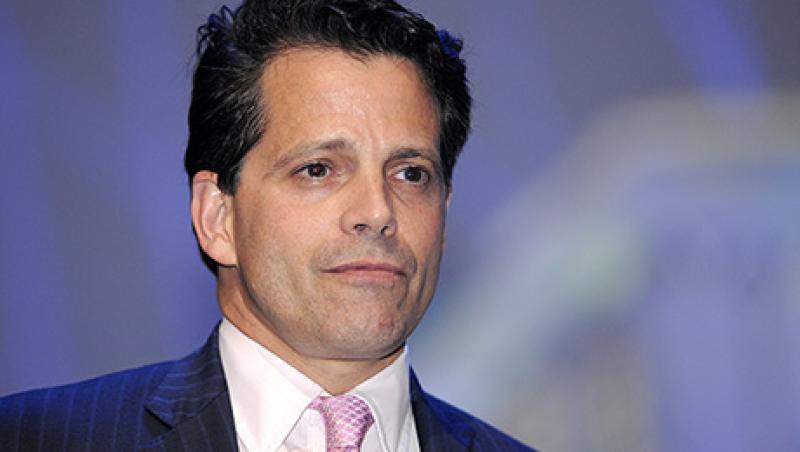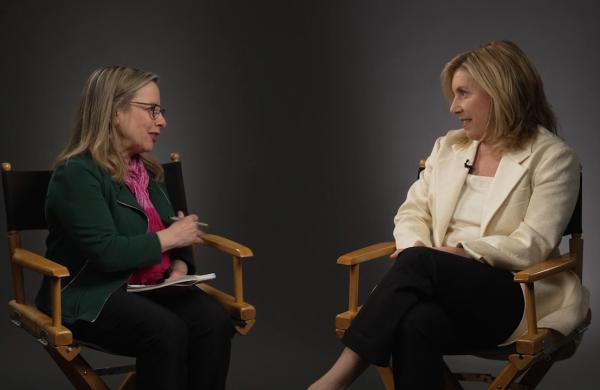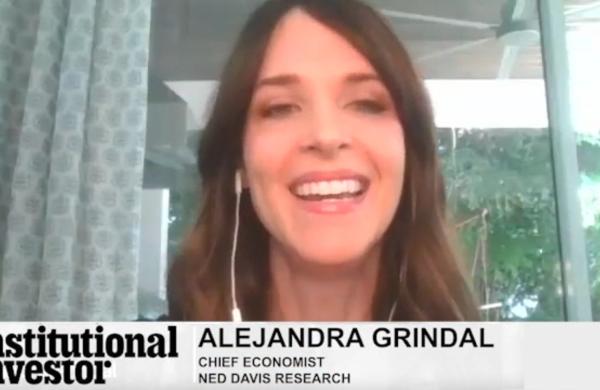Often the best speakers are the ones who keep things quiet and draw you in. Watch the morning broadcasts on any of the major financial cable television networks, and the opposite principle appears to apply. From the political pugilism of Charles Gasparino on Fox Business to the airy bombast of Bloomberg TV’s Tom Keene and the fixed-income ravings of Rick Santelli on CNBC — the only man in financial media who can turn a yield curve into a disquisition on the evils of Obamacare — financial TV often resembles a contest to see which nonspecialist can shout the loudest. Every morning, as markets open, these angry heads pop onto our screens to dispense pearls of wisdom that are brief, certain and very, very loud: Buy health care! Sell Twitter! The Fed must pay!
But could financial television’s shouty moment — this yell époque — be about to end? TV across all genres appeared to be a moribund medium a few years ago, but smart programming on once-peripheral cable networks such as AMC and HBO, coupled with the rise of on-demand TV service Netflix, has prompted many to speak of a new golden age of television.
Financial TV has mostly remained on the margins of these broader currents, and the 2008–’09 financial crisis provided little incentive, and fewer potential customers, for experimental finance-focused programming. But as economic growth has picked up and both public and private markets have charged into record-breaking bull runs, the commercial winds have blown back in favor of experimentation.
Late last year saw the launch of Real Vision TV, an on-demand Internet streaming service featuring in-depth interviews with finance notables and videos of presentations, lectures and product launches of potential interest to those active in the markets. And in April Anthony Scaramucci, the founder of New York–based hedge fund firm SkyBridge Capital, relaunched Wall Street Week, his Internet-age reboot of the PBS stalwart that ran from 1972 to 2005 with Louis Rukeyser as its primary host, and whose 1990s decline, in part, was because of the rise of CNBC and its progeny. Both these franchises promise a more reflective, less empurpled approach to financial TV, and early results are encouraging.
Does TV even matter in finance? When the networks break big news — as CNBC regularly does, especially when broadcasting from conferences such as Delivering Alpha, which it co-hosted with Institutional Investor earlier in July, or featuring one of the big-dog headline generators of activist investing, such as Carl Icahn — there’s an argument that it does. But most financial professionals, at work in their open-plan offices, keep the TV on mute for most of the day, perhaps because it’s so loud.
Much of the action on financial TV as we’ve come to know it — and it’s worth remembering that this type of CNN-inspired, tape-led, perma-blinking coverage of markets is a relatively recent development, dating back to the 1990s — is designed for retail investors and fixates on short-term market movements over the course of the trading day. This brings a certain hyperactivity to the coverage. Macroeconomic currents are dispensed with in summary, just-the-news fashion, which may be understandable, since serious investors build big macro bets on long-term theses, rather than on short-term swings. Instead, there’s lots of airtime devoted to the equity markets, whose daily drip-feed of earnings announcements, product launches, management stoushes and deal whispers is tailor-made for talk TV’s conventional strengths: the quick grab, the easy quip, the spluttering diatribe. These days there’s also a big emphasis on private markets, because Uber is hot, the venture capitalists are all on Twitter, and everyone wants to invest in a unicorn.
This is all good entertainment. But the boring stuff, where much of the real action in structural market transformation lies — the generational shift in the U.S. from defined benefit to defined contribution pension plans, post–Dodd Frank changes to the derivatives market, the move of systemic risk out of the Basel III–constrained big banks and into the shadows of hedge funds and asset managers, the general disintermediation of middlemen across the financial industry — gets relatively short shrift. And the thoughts that go into portfolio construction are afforded no airtime at all. These thoughts, however, constitute the truly interesting meat of any comprehensive investment process: These are the big bottom-up and top-down ideas about governments, demographics, sector innovation, fund flows and policy shifts that sophisticated investors use when deciding where to put their money and how to build a portfolio that fits together.
In their different ways, Real Vision TV and Wall Street Week aim to remedy some of these deficiencies. Scaramucci, whose firm organizes the annual SALT hedge fund conference in Las Vegas, has a flashy hosting style that occasionally veers into pally-pally obsequiousness — no surprise, given his connections in the investment world — but there’s an endearing earnestness to much of the substance of Wall Street Week. So far, there have been several big set-piece interviews diving into the careers of investing legends such as Los Angeles–based DoubleLine Capital founder Jeffrey Gundlach, New York’s Fortress Investment Group’s principal and director Michael Novogratz and Washington-based Carlyle Group’s co-founder and co-CEO David Rubenstein. These pieces have been educational and patient, a kind of Mad Men for the Wall Street set, in a way that much of the frenetic, short-termist coverage on cable networks can never be.
Real Vision TV, branding itself the “Netflix of finance,” is the brainchild of Raoul Pal and Grant Williams, each of whom has his own popular investment newsletter (“The Global Macro Investor” and “Things That Make You Go Hmmm,” respectively); they are funding the venture with their own money. The videos are often wonkish — many feature debates on macroeconomic theory or policy — and involve little of the purchasing direction feathered into the buy- and sell-crazed content of the cable networks. The videos are also often very long (up to an hour) and have a more obvious global focus than Wall Street Week’s U.S.-centric offerings. There’s an untrained quality to many of those who appear on air, interviewers and interviewees alike, that provides welcome relief from the slick, hyperprimped stylings of cable talent. A subscription costs $400 a year; Pal says Real Vision TV is approaching 5,000 subscribers, half of them outside the U.S.
Will either of these services dislodge the cable giants? It’s difficult to see that happening. And cable will likely always reign when it comes to breaking news. But after decades of shouting, financial TV may have caught up with developments in other corners of the medium. And patient, thoughtful investors, with an interest less in playing the intraday moves than in building cohesive, risk-adjusted portfolios, could finally have a reason to switch the set off mute.
Follow Aaron Timms on Twitter at @aarontimms.







